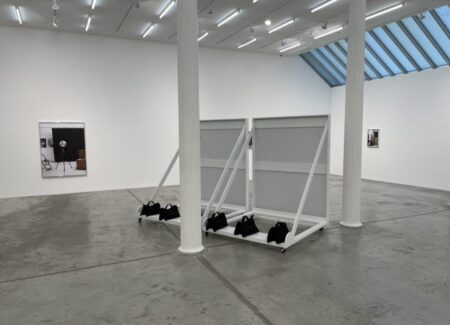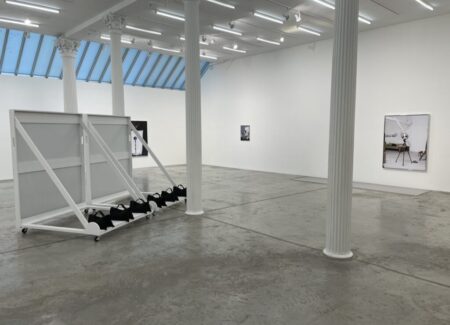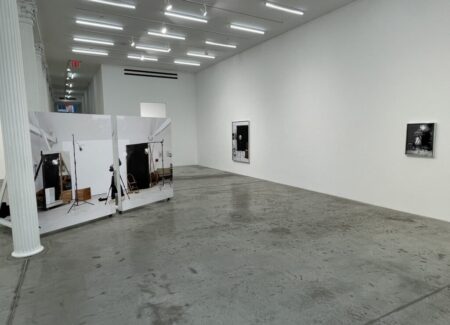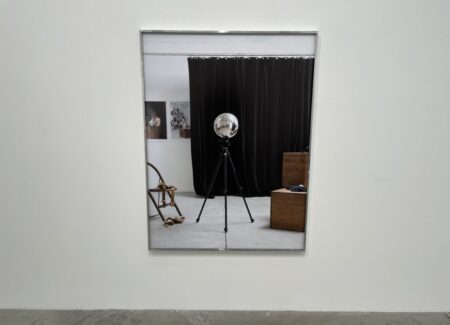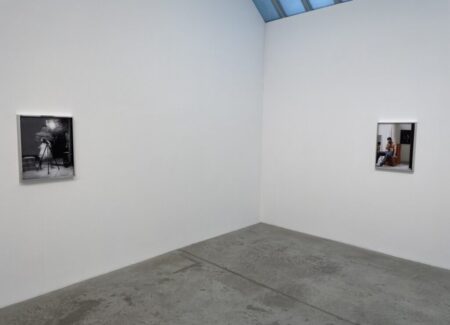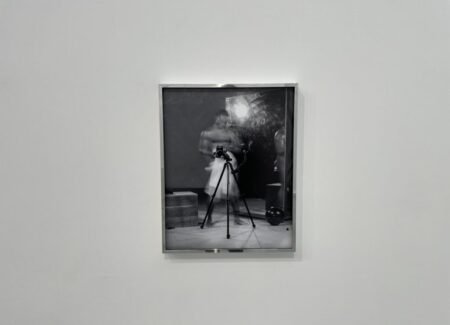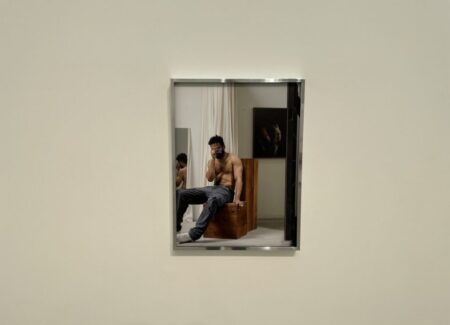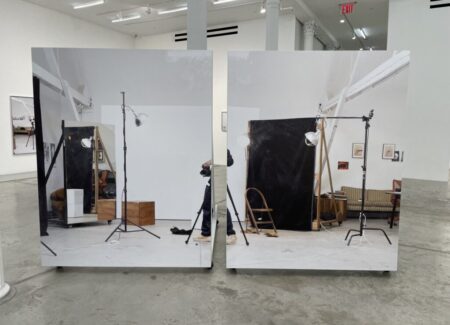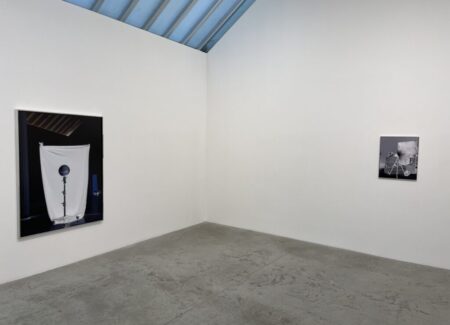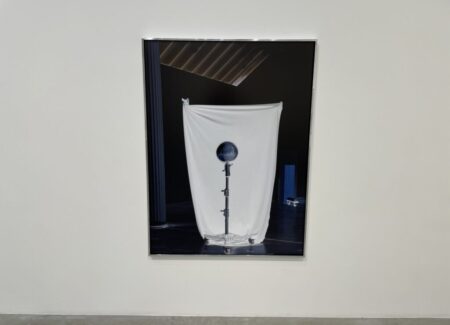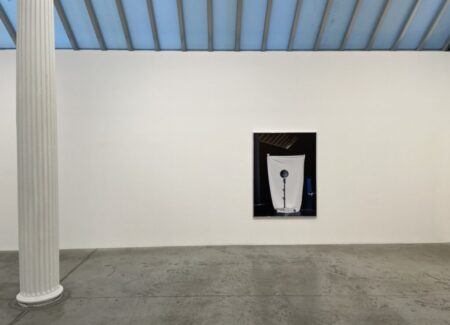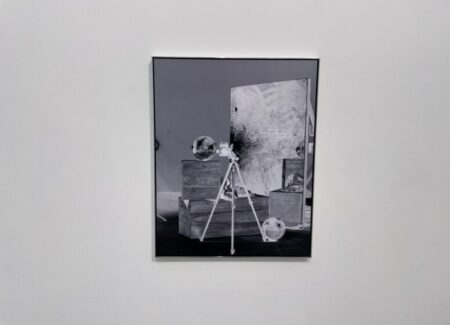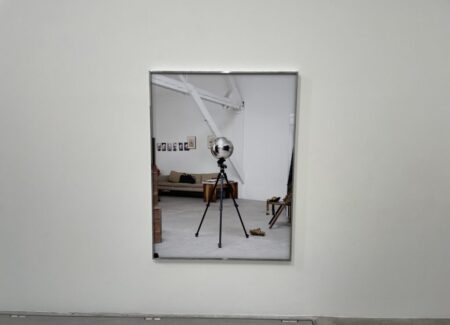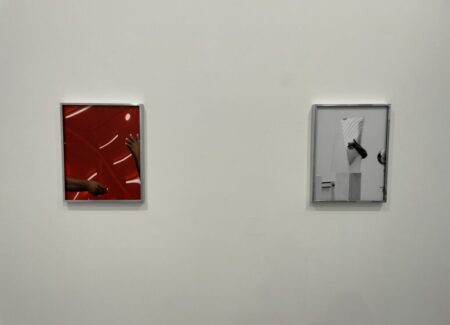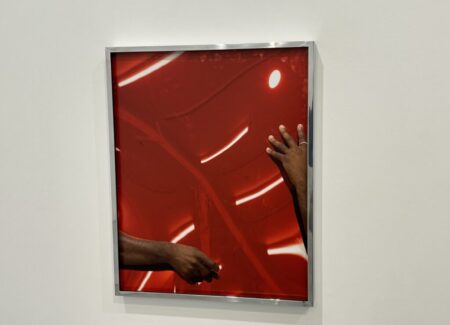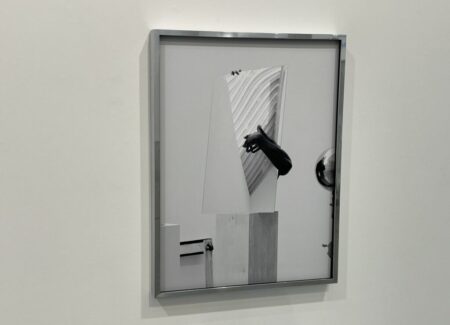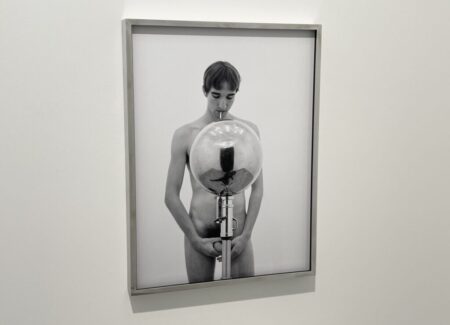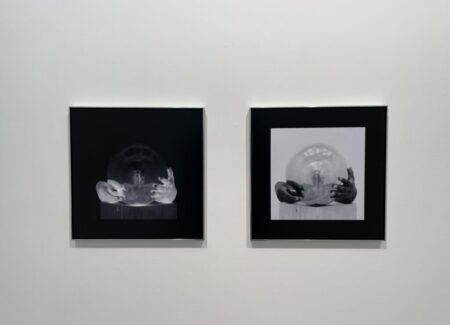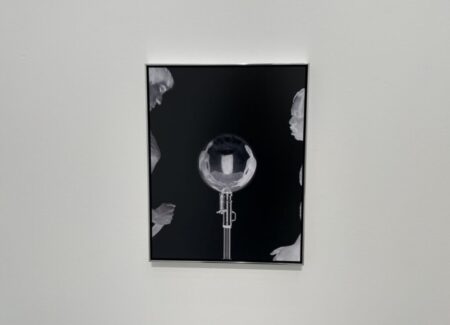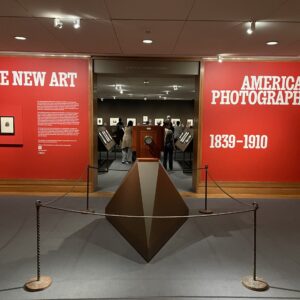JTF (Just the facts): A total of 13 photographic works, variously framed/displayed, and hung against while walls in the main gallery space and a smaller side room.
The following works are included in the show:
- 8 archival pigment prints, 2024, sized roughly 60×45, 24×20, 24×19, 24×18 inches, in editions of 5+2AP
- 4 dye sublimation prints on aluminum in artist’s frame, 2024, sized roughly 24×19, 14×14, 14×11 inches, in editions of 1+1AP
- 1 archival pigment print mounted on dibond on wheeled wooden frame, 2024, each panel sized 75×60 inches, unique
(Installation shots below.)
Comments/Context: Aside from a steady drumbeat of notable inclusions in museum group shows and art fairs, it’s been nearly five years since we last had a chance to check in with a full presentation of new photographs by Paul Mpagi Sepuya. And during that time, Sepuya has methodically established a place for himself in contemporary photography, with curators and collectors alike taking note of the unique ways he has been experimenting with the complex visualization of space (largely in his studio) as well as his sophisticated layering of seeing and being seen.
Controlled, studio-based photography has of course been around since the invention of the medium, but what Sepuya did in some of his early shows (in 2017, reviewed here, and in 2019, reviewed here) was to reclaim the pared down artist’s studio as a place for various kinds of deliberately disorienting visual exercises and iterations, many that involved documenting the intimate interactions of the artist and his friends and lovers. A camera on a tripod often served as a focal point, with mirrors, a hanging black cloth, and blank white walls creating a minimal stage set for improvisation. Along with these few variables, Sepuya actively played with rephotography, taping torn paper prints to the studio walls, which he then reflected and photographed in confusing combinations; he also renegotiated the roles between who was behind the camera and who was in front of it, again using the mirrors to contort and rearrange the space in unexpected ways.
In this show of works all made in the past year, we find Sepuya still very much exploring the possibilities of the studio, but having now incorporated a range of new ideas and perspectives into his compositions. A few works step back much further than before, offering us wider views of Sepuya’s workspace and its nearby sitting areas, including various plinths, movable mirrors, folding chairs, draped backdrops, and a low slung sofa. “Studio Mirror Diptych” is the broadest of these studies, placing the camera in the “gutter” between the two images and mounting the prints on moveable wooden supports like Sepuya’s mirrors; the work has been installed in the middle of the gallery, with its back to the door, encouraging us to move around it to discover its bisected view.
Another change to the formula involves replacing the camera on the tripod with a gazing ball perched on the same three-legged structure. Its mirrored surface then reflects a rounded view of the surroundings, including the photographer making the image. Sepuya has made six meticulously ordered images of the gazing ball, geometrically dividing the space of the studio using the legs of the tripod and the mid-points between the legs for the placement of extending lines to the camera position. When observed together (two of the prints are included in the show), there is a confusing sense of simultaneity like that found in the work of Barbara Probst; the orienting cracks on the floor twist in unexpectedly different directions and two knee pads hosted on a folding chair are seen from two opposing vantage points, making the space and their place in it look entirely different.
A different group of new pictures experiments more with process and presentation. Two images were made at night (instead of in the usual bright light of the day), creating different areas of darkness and shadow in the studio, and alternate modes of movement and blur. Sepuya then adds yet another layer of reversal by printing one of the images in negative tonalities, where areas of flared light on the surface of the mirror turn black and the entire studio scene feels almost haunted. He’s also introduced smaller dye sublimation prints on aluminum to his repertoire (with thin metal artist’s frames), bringing a sense of tactile metallic richness to the resulting works; his larger archival pigment prints (in mirrored metal frames) have less of this eerie object quality.
Sepuya then packs up many of these recent aesthetic ideas and transports them to Bortolami’s actual gallery space, where he has made several images of and in the confines of the space his other new works are displayed. This nesting effect takes shape in an image of a gazing ball staged in the gallery, with the skylight above visible in the composition; the picture has then been reversed to negative tonalities, making the ball look black against white drapery. Two other pictures play with grasped mirrors, reflecting the white cube space and distorting the fluorescent lights above.
More charged are a set of four images made in a tiny side room, where again Sepuya has made the works in the room where they have later been displayed. Two nude models (one white man and one Black man) are separated by a mirrored gazing ball on a stand. In one image, they stand looking at each other separated by the ball, the sexual excitement of one man represented by his erect penis; in another image, one man stands behind the ball dripping spit onto his penis while the other is seen lying on the floor (as reflected in the ball). The final two images arrange Black hands cradling the gazing ball sitting on a plinth, creating a mirrored view of the doorway out into the main gallery space. Negative tonalities warp and upend some of these images further, and the dye sublimation printing further enhances some of the ghostly inverted moments.
Seen together, this show effectively takes stock of Sepuya’s current thinking, albeit with images that are a little less pleasingly disorienting and desire filled than some of his strongest works from the past. What is most impressive about this show is the feeling of Sepuya continuing to challenge and reinvent himself, building on ideas that have worked in the past and extending them in new risk-taking directions.
Collector’s POV: The works in this show are generally priced between $6500 and $14000, with the large two panel work POR. Sepuya’s work has not yet reached the secondary markets with any consistency, so gallery retail remains the best option for those collectors interested in following up.
